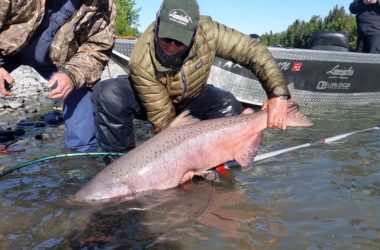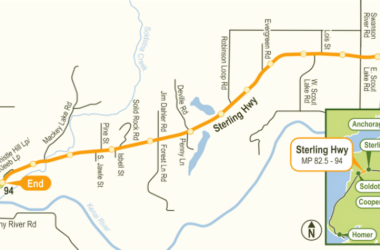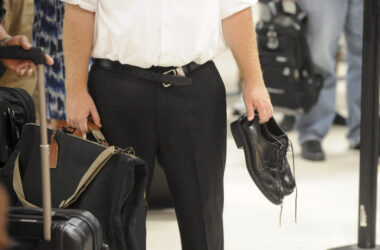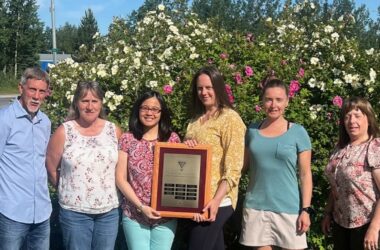Leading into the new year, KSRM will be recapping our top ten stories of 2014: exploring the issues that had the deepest impact on our community.
The set net ban initiative really took shape in the end of 2013 and has progressed through this year.
- Bob Penney’s Kenai King Conservation Alliance (formed in May 2013) underwent a name change, just prior to filing an initiative to ban set netting in five areas of Alaska, including the Kenai Peninsula.
The Alaska Fisheries Conservation Alliance sent the paperwork to Lt. Governor Mead Treadwell yesterday, arguing that the ban would not affect 90 percent of the state, and allow the use of set nets for subsistence fishing.
The ban would apply to set net fishermen around Anchorage (including the Kenai Peninsula and Mat-Su), Fairbanks, Juneau, Valdez, and Ketchikan. The popular Kodiak fishery would be allowed to continue.
When first initiated, Cm. Brian Gabriel said he felt the petition is short-sighted, given the 130 year local tradition of the industry…
Cm. Gabriel: “There’s a long, rich history and tradition here of set netting and Kenai was a fishing village, that’s where we started before oil.”
We asked Cm. Gabriel what impact the petition could have on the local area…
Cm. Gabriel: “Well, first thing I see is a bunch of displaced people, because you’ve got 400-some East Side Set Netters, and it’s 85 percent Alaska-resident held permits. In addition to that, you have a lot of crew members that are young kids in the community, that rely on those summer jobs and then the downstream part of it is you’ve got the processors that hire a lot of young people in the community to process the fish, so there’s a ton of job opportunities for anybody that wants to go to work.”
- On January 22 of this year, the Alaska Fisheries Conservation Alliance decided sue the State over the Lt. Governor Mead Treadwell’s decision to deny the initiative on .
The lawsuit was filed in Anchorage Superior Court and AFCA Executive Director Clark Penney said, “We believe the decision by the Lieutenant Governor and the Alaska Attorney General is contrary to Alaska law.”
He continued to say; “We hope for a quick resolution to this matter so we can start collecting signatures and begin thestatewide debate on the damage set nets do to fish stocks and the need to stop their use. The public deserves the right to vote on this issue.”
During that teleconference, AFCA representatives faced a number of questions about their dedication to conservation, including whether they will pursue other measures like limited entry for guide activity, closures around spawning areas, the true number of kings caught by set nets and the use of the word “bycatch” when referring to set nets taking in king salmon.
- On July 23, 2014,State Superior Court Judge Catherine Easter approved the appeal by the Alaska Fisheries Conservation Alliance, thus approving the initiative to ban set nets.
Former Lt. Governor Treadwell had used a prior state case to determine that an allocation of state resources via ballot initiative is unconstitutional. Judge Easter disagreed, saying the initiative would not impact the legislative oversight of the fisheries, and state managers would still make the final allocation decisions.
Joe Connors with the AFCA…
Connors: “I spent six years as a set net fisherman in Upper Cook Inlet. During that time, I caught a lot of salmon, all five species as a matter of fact, but mostly red salmon, but my nets also caught everything else that swam by, including sharks, birds, ducks, flounder, dolly varden, and a lot of king salmon. The 210 foot nets that we use, the set nets, are indiscriminate. They kill everything. If it’s nearby, it gets pushed in with the current, it gets killed.They’re decimating other species of fish here in Alaska.”
Connors explained that set nets need to be banned in Alaska’s five major urban areas (Fairbanks, Valdez, Juneau, Anchorage, the Mat-Su, and the Kenai Peninsula), because of increased fishing pressure in those areas.
Connors: “They’re appropriate for rural subsistence fishing, because there’s very little pressure on those resources. However, in urban areas, the time has come to do what eight other states have already done for conservation’s sake. It’s time for set nets to go.”
Sponsors may start collecting the approximately 35,000 signatures for the initiative as soon as initiative booklets are printed. If enough signatures are gathered, the issue will appear on the August 2016 primary ballot.
AFCA board chair Bill MacKay said “The Alaska Fisheries Conservation Alliance is supportive of commercial fishing in Alaska. It is an economic engine in our state and anyone who says we opposes this valuable industry is dead wrong.”
AFCA’s Bob Penney agreed, “While the group Resources for All Alaskans opposes our efforts, we support most of its members’ commercial fishing efforts, including the Cook Inlet Drift Fleet. This set net ban initiative is a conservation-based approach that is limited to one style of fishing – set nets. They are a wasteful means of fishing that kill or maim everything in their path.”
The United Fishermen of Alaska say they will appeal the decision.
In a written statement on August 6, 2014, the State Department of Law said they feel Easter “erred in finding that the proposed ban on set-netting does not amount to an appropriation” and said they look forward to presenting their arguments before the Alaska Supreme Court.






